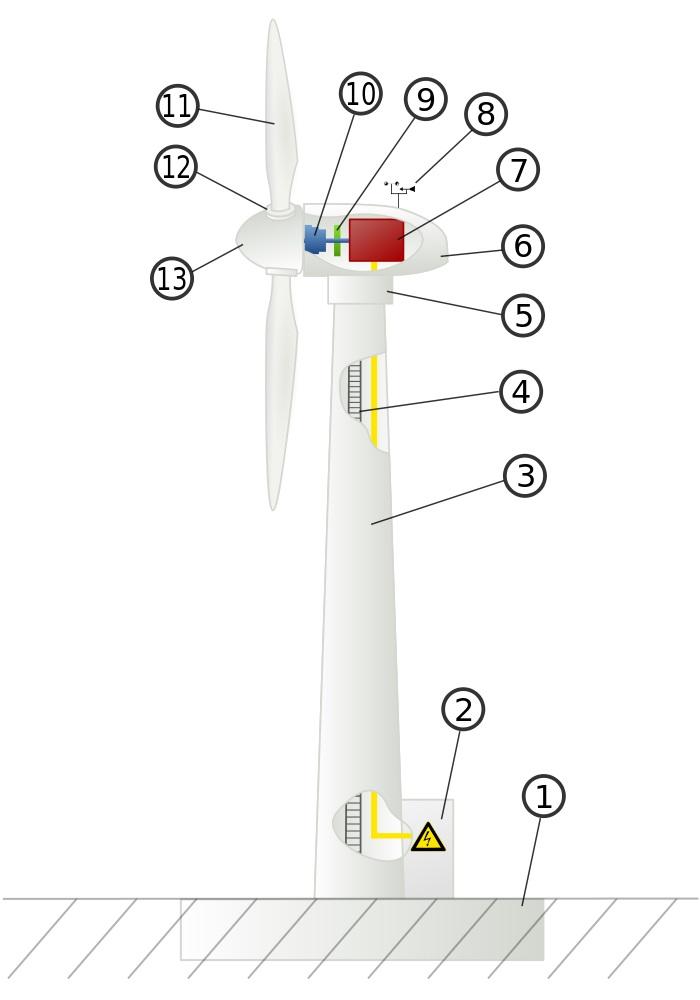Wind Power Basics
Wind Power Basics
Introduction
In today's life electrical power plays a major role. It is not only required for lightning but also for all electronic devices, large vehicles like aero planes, small scale industries to large scale industries, etc. It is difficult to imagine our life without power supply. But due to use of conventional energy sources like coal and oil for power generation, the environment is getting polluted day by day because of emissions like CO₂ from these sources. Actual global emissions increased by 1.1% over 2011, reaching a total of 34.5 billion tons in 2012. There is an increase of 2.9% in the annual increase of global emissions since 2000.[1] On the other hand these conventional resources are getting depleted with its continuous use and can be vanished in near future. So it is important to make use of the available renewable energy resources like wind energy, solar energy, biomass, etc.
Fundamentals of Wind Energy
- Wind Energy: Wind is caused by flow of air from high pressure area to low pressure area and this difference in pressure is result of heating of the uneven earth's surface by sun. So we can say that wind energy is a form of solar energy.
- Wind power:Wind power is the conversion of wind energy into a useful form of energy, such as using wind turbines to make electrical power, windmills for mechanical power and wind pumps for water pumping.
- Wind Turbine:A turbine is a rotary mechanical device that extracts energy from a fluid flow and converts it into useful work. A turbine is a turbo-machine with at least one moving part called a rotor assembly, which is a shaft with blades attached. Moving fluid acts on the blades so that they move and impart rotational energy to the rotor. A wind turbine is a device that converts kinetic energy from the wind into electrical power.
Parts of a Wind Turbine

Picture representing different Parts of a Wind Turbine [2]
- Foundation: Its the basement of a wind turbine on which the whole self weight of wind turbine's will come. It is normally under the surface and it cannot be seen.
- To Electric Grid: This is the connection from which the generated power is sent to electric grid with the help of electric wires.
- Tower: It is the supporting structure for nacelle and rotor. The nacelle is placed above this tower. Tower is a assembly of number of cylindrical hallow structure which are assembled at the site (wind farm).
- Access Ladder: There will be a ladder inside the tower from basement to the top so that one can get access to the nacelle for any kind of repair or inspection work.
- Yaw Control: Since the direction of wind keeps on changing with respect to time and the rotor should be placed in the direction of wind to get the maxim power output, this yaw control helps in o changing the direction of the rotor and will place it in the direction of the wind.
- Nacelle: It is a rectangle like structure that contains generator, controller system, cooler etc. When yaw controls activates the whole nacelle is rotated in the direction of wind.
- Generator: It is the unit responsible for power generation.
- Anemometer: It is a device that is used for wind speed measurement. This data is sent to control system.
- Brake: It is used to stop the rotor that is rotating. Usually brakes are applied when weather conditions are not good to generate power or the rpm of the rotor is above normal speed which may not suite to generator.
- Gear Box: It consist of gears that increases the rpm of the rotor to suite to the rpm of generator.
- Rotor Blade: Blades are the rotating member of wind turbine that makes the shaft to rotate which is connected to gearbox and then to generator. Blades are of aerofoil shape and length will vary from 30 m to 80m (approx.) depending on the rated power of wind turbine.
- Pitch Control: It is used to change the angle of inclination, pitch angle which are responsible for getting maximum efficiency.
- Rotor Hub: It is the one which holds the rotor blade and it will also rotate along with blades.
Source :
Last Modified : 3/2/2020
Briefs about technologies for wind power generatio...
Various models available for use of wind energy fo...
Power generation models using biomass is briefed h...
The topic covers importance of wind energy.
